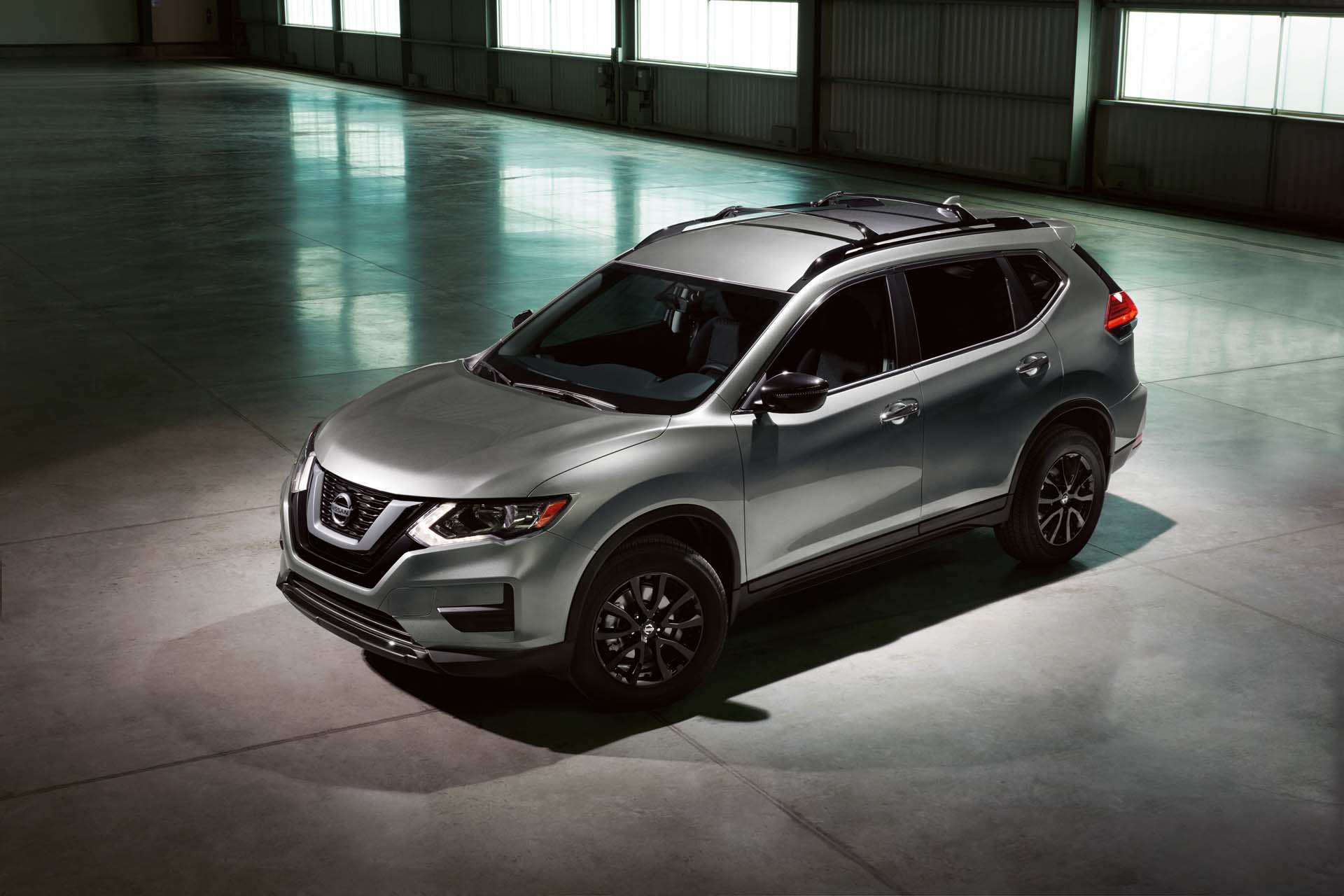[ad_1]
The Nissan Rogue covers the middle of the automaker’s crossover SUV lineup. Tucked in between the teensy, utterly impractical Juke and the big three-row Pathfinder, the Rogue relies on good seats and interior space to move its metal.
In a tough class along with the Honda CR-V and Subaru Forester, the Rogue’s unexciting powertrain and handling aren’t big demerits. Its subpar crash-test scores from the NHTSA are.
For 2017, the Rogue is offered in S, SV, and SL models. A new Hybrid model comes in SV or SL trim. Toward the end of the 2017 model year, Nissan made automatic emergency braking, lane departure warnings, and rear cross-traffic alert standard on every version of the Rogue. To mark the change, so-equipped Rogues are labeled as 2017.5 models.
Review continues below
We give the Rogue lineup a 6.8 out of 10, with high marks for comfort, utility, and fuel economy. (Read more about how we rate cars.)
Nissan Rogue styling and performance
Nissan introduced the latest Rogue in the 2014 model year, and a light update this year doesn’t change its benign, handsome styling too much. The front end wears a deeper V-neck grille, the taillamps glow with LED power, but neither of those details alters the conservatively executed sheet metal much at all. The interior gets some nicer materials and trim this year as well.
The standard Rogue draws power from a 2.5-liter inline-4 paired with a continuously variable transmission (CVT) from the first generation. Power output is set at 170 horsepower. Acceleration is mediocre at best. The Rogue’s power drones out through the CVT to either the front or all four wheels, but it sounds less intrusive than last year, thanks to a few pounds of additional sound deadening and thicker glass.
A new Hybrid edition pairs a 2.0-liter gas 4-cylinder with a 30-kw electric motor and lithium-ion batteries for a net of 176 hp. The hybrid powertrain doesn’t act remarkably different from the gas-only engine, other than adding a couple of hundred pounds to its curb weight. The Rogue Hybrid delivers EPA ratings of up to 34 mpg. Other Rogues can earn ratings as high as 28 mpg combined.
The Rogue’s best performance asset is its calm, composed ride. It doesn’t feel overly stiff, and tall-sidewall all-season tires damp out a lot of freeway roughness. Nissan also uses stability control in clever ways, by applying brake to certain wheels to smooth over bumps and to cut cornering lines. It’s substantial and controlled on the road; it just doesn’t have the vivid feedback of an Escape or a CX-5.
Rogue comfort, safety, and features
The Rogue offers plenty of seating space and comfort, though its third-row option is more for pride than for passengers. The front seats have dense bolstering that feels good after hours-long road trips. A power driver’s seat is available, but like the Ford Escape, there’s no power offered for the front passenger seat, though the right-side front chair does fold down for more carrying capacity. Second-row passengers have good space, thanks to sliding and reclining seats.
While it’s sized at the smaller end of the compact crossover class, Nissan made the unusual decision to offer a third-row seat in the Rogue. Since the second row can be adjusted on a 9-inch-long track, the third-row seat can have usable leg room, but the cushions sit low and head room is tight. Only small children will be comfortable. Even then, it’s a short-distance solution at best.
All Rogues come with standard curtain airbags and stability control, as well as a rearview camera. The Rogue scores a middling four-star rating (out of five) in crash tests conducted by the government, but it has earned Top Safety Pick+ status from the insurance company-funded IIHS. Safety options include a surround-view camera, blind-spot monitors, a lane-departure warning system, and a forward-collision alert system. Adaptive cruise control and automatic emergency braking are offered as well—the latter having been made standard on the 2017.5 model.
All Rogues comes with power windows, locks, and mirrors; an AM/FM/CD player with a USB port; Bluetooth with audio streaming; a rearview camera; and 17-inch steel wheels. The Rogue SV adds alloy wheels, a power driver’s seat, satellite radio, dual-zone automatic climate control, keyless ignition, and NissanConnect, which enables use of smartphone apps like Pandora. The Rogue SL gets Bose audio, navigation, a power tailgate, the surround-view camera, 18-inch wheels, heated front seats, and leather upholstery.
Options include third-row seating, run-flat tires, a panoramic sunroof, those advanced-safety features, and LED headlights.
[ad_2]
Source link
